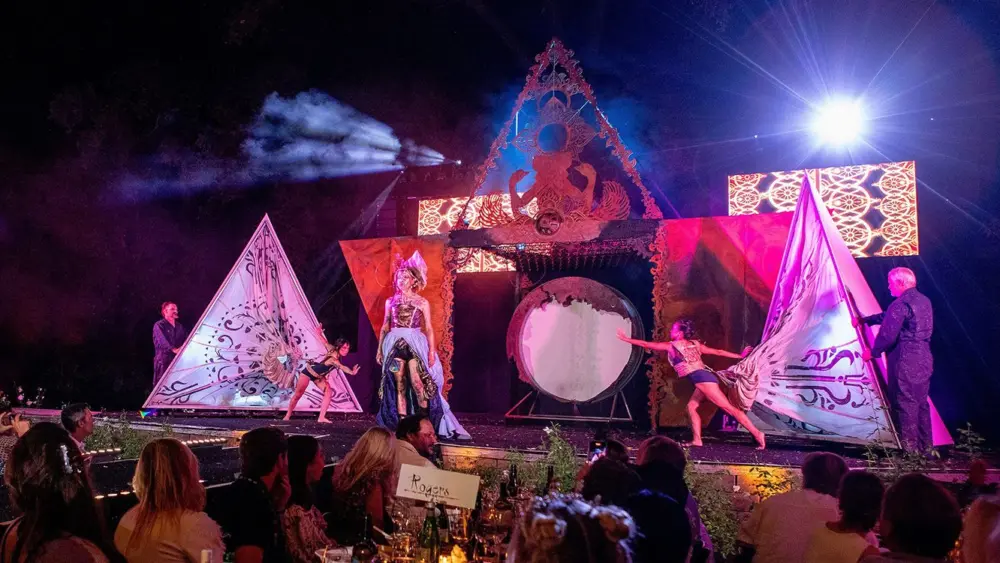Arguably, wine marketing became a circus when people realized social networking wasn’t only here to stay, but was also revolutionizing the way millennials buy wine. Wineries tossed up Facebook pages while staff veterans who barely knew how to operate a smartphone aimlessly tweeted. These first attempts at new media wine marketing reminded me of the ignorant bliss of high school. Only those who hired savvy social marketers succeeded. To call the aftermath a circus is an understatement.
When I got word of Mutineer magazine’s millennial Wine Marketing Circus (May 14 to 18), it sounded like a controlled fiasco I should be a part of: A five-day sideshow that moved from Calaveras County to Napa to teach attendees how to effectively market to millennials, the next dominant force in the wine market.
If only it were as simple as donning a red clown nose like those in the opening video montage kicking off the Napa leg of the circus. Clown jokes aside, the punchy ditty got my attention and forces many, like myself, to laugh. In the spirit of truth in reporting, I’ll disclose that I’m not a millennial, instead a proud Gen Xer, ready to hate everything this bunch has to say. But as a journalist, I’m prepared to listen.
Panelist Christophe Smith warms up the 200-plus crowd, wearing what resembles a sequined track suit. I tell myself not to hold his daffy duds against him when he steps to the podium, as one of five featured speakers. As he eggs-on the audience, I remember the technology tidal wave I was intimately a part of, the dot.com boom. We too were theatrical in our tactics but, just like us, these modern day counterparts have nuggets to share with anybody who’s smart enough to listen.
Mutineer opted to offer the seminar for free. Editor-in-chief, Alan Kropf, speaks to the complimentary price tag, “Many of the ideas discussed by our speakers are rooted in beverage culture and inspired authenticity. We felt charging admission would undermine our message. We wanted to set an example for the rest of the wine industry.”
Tyler Balliet, president and founder of Second Glass, steps into the center ring. He captivates me with his red-hot Chuck Taylor high tops and keeps my attention as he discusses three categories of millennials: those who don’t know a world without the Internet (ages 27-35), without cell phones (23-27) and sans smartphones (12-22). Balliet dubs previous generations as “info seekers,” and millennials as “info sorters and validators.” This is an important distinction when it comes to buying patterns—the latter scoff at “expert opinions” in favor of “trusted friends.” Informal data Balliet gathered at one of his Wine Riot events: 78 percent of his mainly millennial crowd copped to buying based on peer recommendations, while critic-based purchases represented only 12 to 14 percent. Many attendees claimed to have no idea who Robert Parker is, while others thought “point” designations were related to price. If his stats represent a valid sample of the millennial population, you have to wonder why marketing efforts still center on the point system.
Tip 1: Trusted friends trump all. Balliet cements his speech with, “Social media isn’t meant to be the first-touch communication. You won’t get new customers with Facebook. It’s a great way to engage with your core people.” This speaks to why virgin social media attempts were deemed unsuccessful.
Tip 2: Use the right tactic for the right customer to get the right result. Ashley Nicole Teplin, partner at Teplin+Nuss, speaks to the duel between new and traditional wine PR. And the victor is? “You can’t have one without the other.” Teplin, who dances in both worlds, still turns to staid media tactics like PR Newswire in concert with new media strategies that let clients “showcase their best online selves.” She encourages people to create an organized media plan with consistent, effective follow-up. She echoes Tip 2: “It’s like a good massage. You want to make sure you’re giving the right people the right backrub.”
Alan Kropf, who founded Mutineer in 2008 and attained national distribution in 2009, references the current state of the industry as the “perfect storm” of social media, digital media and consumerism. “Evolve marketing tactics to evolve your winery.” Revolutionary? No. More like rudimentary. Yet why do so many wineries refuse to change tactics?
Kropf accuses the industry of being rigid and averse to change. I worry somebody may toss a tomato at him. But I’ve witnessed the rigidity. It’s like what I experienced in the publishing industry in the 1990s. Traditional publishers scoffed at the value of creating an online presence for their brands. Soon enough, those veterans were canned for refusing to evolve with the times. It’s still happening.
Tip 3: Make peace with social media. Kropf delivered this nugget, followed by, “Points are not the problem.” I disagree with him on this one. I view the industry’s obsession with points as a plague that’s stifling innovation. He clarifies, “The influence of the point system is a reflection of the weakness of the wine culture.” I want to poke holes at what Kropf says, but darned if I can.
“It comes down to reconciling the gap between what the industry is and what it should be.” He describes one scenario: “You have a niche wine culture, where a millennial isn’t drinking wine,” he says. The fallout: mainstream marketers who ignore tapped potential will lose market share. His gold star scenario: “A mainstream, glorious culture that’s enjoying and loving wine—and spreading the word.”
When I question him on the decision to make the millennial circus free, he says, “If a bunch of millennials from startups can pull something like this together, imagine what’s possible leveraging the resources of more established segments of the industry?” If only more of those segments were present to hear what this pack shared, then we’d be getting somewhere.
Author
-

Christina Julian left Los Angeles and a career in advertising to sip and swirl for a living in Napa Valley, where she vowed to make wine and the discussions around it, more approachable. She’s covered everything from arts and entertainment to travel and leisure but remains true to her own words as a wine and food writer for The Infatuation. NorthBay Biz was one of the first regional publications she wrote for when she landed here more than a decade ago, and she’s never looked back. Learn more at christinajulian.com.
View all posts



